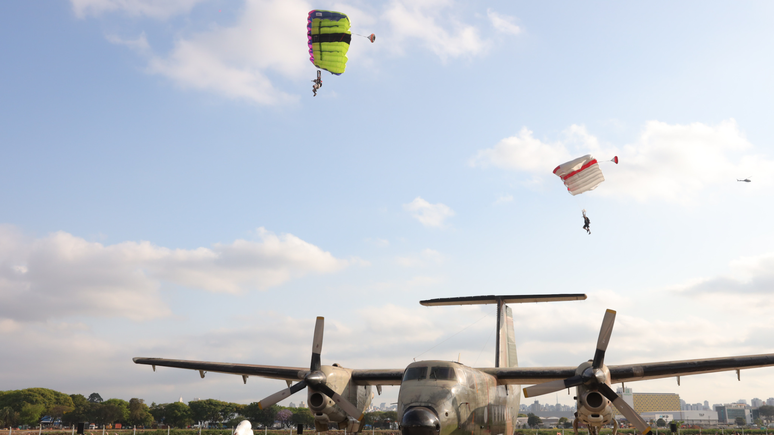The state has 124 confirmed cases and 922 under investigation; The use of protective equipment, such as gloves and boots, is cited as a form of prevention
This Monday, the 17th, the Secretary of Health of Rio Grande do Sul (SES-RS), Arita Bergmann, used social media to highlight the need for the population of Rio Grande do Sul to immediately seek medical attention when experiencing symptoms of leptospirosis. Arita stressed that there are enough drugs and that early diagnosis is key to preventing progression to serious conditions and deaths.
“Have you come into contact with mud, walked in floodwaters and experienced symptoms of leptospirosis? Seek immediate medical attention. The disease is treatable and medications are available. Don’t wait at home thinking it will go away, as the disease can spread worse and treatment cannot be postponed,” Arita warned.
According to a bulletin released by the SES, until yesterday the State counted 124 confirmed cases of leptospirosiswith an increase of 129.6% compared to Friday 24th, when there were 54 confirmed cases. Furthermore, recorded 5 dead AND 922 suspected cases I’m under investigation.
In the video, Arita highlighted the importance of following protection recommendations, such as using boots and gloves in situations of contact with water, clay or mud potentially contaminated by the leptospirosis virus. According to the owner, the guidelines are especially important for those involved in relief efforts and for people starting to clean their homes after a flood.
In response to the video, which in addition to the owner’s personal profile was also published on the profiles of the SES and the RS Government, the population of Rio Grande do Sul asked for prophylactic measures. Additionally, people questioned guidelines on the use of protective equipment, such as gloves and boots, highlighting the value of the materials and the conditions experienced by those affected by the floods.
The SES said it is working together with municipalities to train teams capable of forwarding diagnostic tests to the Central Laboratory of the State of Rio Grande do Sul (Lacen/RS), which is fully operational in analyzing the tests. “We are organizing with the Municipalities to qualify the flow of samples collected by the healthcare network. Lacen is processing these samples and our task is to reduce response times”, declared Tani Ranieri, director of the State Health Surveillance Center (Cevs) .
What is leptospirosis?
A leptospirosisas explained by infectious disease specialist and consultant of the Brazilian Society of Infectious Diseases (SBI) Renato Grinbaum, it is an infectious disease caused by bacteria of the genus Leptospira, generally acquired through contact with water or soil contaminated by the urine of infected animals, mainly rats. Therefore, floods are recognized as environments conducive to the spread of disease, increasing the risk for those exposed to water or mud.
It is important to underline that transmission is zoonotic, that is, it occurs from animals to humans, without direct person-to-person transmission. Additionally, skin lesions increase susceptibility to infection, although it is important to note that even without visible skin lesions, infection is still possible.
What are the symptoms of leptospirosis?
According to the Ministry of Health, clinical manifestations range from asymptomatic forms to serious conditions, associated with fulminant manifestations. They are divided into two phases: initial phase and late phase.
The main ones in the initial phase are:
- Fever
- Heachache
- Muscle pain, especially in the calves
- Lack of appetite
- Nausea
Also, diarrhea, joint pain, conjunctival redness or hemorrhage (in the eye region), photophobia, eye pain, cough, red spots on the skin, enlarged liver and/or spleen, and enlarged lymph nodes (nodes found mainly in the neck, armpits and groin).
In approximately 15% of patients with leptospirosis, it progresses to severe clinical manifestations, which normally begin after the first week of illness. In severe forms, the classic manifestation of leptospirosis is Weil’s syndrome, characterized by jaundice (very intense orange or yellowish shade of the skin), renal failure and hemorrhage, most commonly pulmonary. You may need hospitalization.
Manifestations in the late phase:
- Weil syndrome: simultaneous appearance of jaundice, renal failure and hemorrhage
- Pulmonary hemorrhage syndrome: acute lung injury with bleeding
- Pulmonary involvement: dry cough, dyspnea, expectoration
- Acute respiratory distress syndrome (ARDS)
- Hemorrhagic manifestations: lung, skin, mucous membranes, organs and central nervous system
“This is a serious disease, as the bacteria penetrate the skin and spread to various organs of the body, causing progressive dysfunction. Therefore, it can cause hepatitis, kidney damage and even affect the brain, causing encephalitis. All these symptoms are consequences of the direct invasion of bacteria into the body,” Grinbaum explained.
Is there a treatment?
Yes, there is a treatment. According to Grinbaum, for mild cases, treatment is outpatient and with plenty of hydration. In the most serious cases, hospitalization must be immediate, to reduce complications and lethality. Patient care will also depend on complications associated with the condition.
Furthermore, the Ministry of Health specifies that, when the disease is suspected, the recommendation is to contact a health service and report contacts with risk exposure. The use of antibiotics is indicated at any stage of the disease, but their effectiveness is usually greatest in the first week after the onset of symptoms. In the initial phase, doxycycline or amoxicillin are used; for the late phase: crystalline penicillin, crystalline penicillin G, ampicillin, ceftriaxone or cefotaxime.
Self-medication should be avoided in any case, be it mild or severe.
How to prevent?
The best way to prevent leptospirosis is to avoid contact with potentially contaminated water. If this cannot be avoided, the doctor recommends the use of protective equipment, such as rubber boots or galoshes and waterproof clothing. If your skin is exposed to contaminated water, it is important to wash your body promptly to reduce exposure time and minimize the risk of infection.
Furthermore, the Ministry highlights the following guidelines:
- Flood mud has a high infectious power and sticks to furniture, walls and floors. It is advisable to remove this mud (always with the protection of gloves and rubber boots) and wash the area, then disinfect it with a 2.5% sodium hypochlorite solution, in the following proportion: for 20 liters of water, add two teacups (400 ml) of 2.5% sodium hypochlorite. Apply this solution to the areas contaminated with mud, leaving it to act for 15 minutes.
- Avoid contact with flooded water or mud and prevent children from swimming or playing in these waters. People working to clear mud, debris and unclog sewers must wear rubber boots and gloves (or double plastic bags tied around their hands and feet).
- To control rodents, it is recommended to properly dispose of waste, properly store food, disinfect and seal water tanks, seal cracks and openings on doors and walls, etc. The use of rodenticides (kidnapping) must be carried out by adequately trained technicians.
I have had contact with possibly contaminated water: what should I do?
In addition to post-contact hygiene, as recommended by Grinbaum, recently the Brazilian Society of Infectious Diseases, together with the Gaúcha Society of Infectious Diseases and the Department of Health of the State of Rio Grande do Sul, released technical note provide guidance on the best way to carry out prophylaxis to prevent the disease in cases of continuous and unavoidable exposure to flood waters, as happened in Rio Grande do Sul.
Although the use of antimicrobials is not recommended as a routine procedure, being administered only when the disease is diagnosed, the note highlights that in high-risk situations, where there is much exposure to flooding and possibly contaminated water, this intervention can be considered with the aim of minimizing risks.
The main recommendation of the entities responsible for the document is the use of doxycycline, administered in a single dose to high-risk post-exposure adults. For children, the dose is calculated based on body weight, establishing a maximum dose. Alternatively, the azithromycin can be used under the same conditions.
Considering these points, the recommendations for identifying people at high risk and eligible for emergency medication use are as follows:
- Rescuers and volunteers with prolonged exposure to flood water when personal protective equipment is unable to prevent exposure;
- Persons exposed to flood water for a prolonged period with careful medical assessment of the risk of such exposure.
It is important to underline this prophylaxis must be carried out only on medical advice. Furthermore, it does not offer absolute protection against leptospirosis and even those who use the recommended drugs can still contract the disease. Furthermore, Pregnant and breastfeeding women should not use doxycycline as a preventative measure.
Source: Terra
Ben Stock is a lifestyle journalist and author at Gossipify. He writes about topics such as health, wellness, travel, food and home decor. He provides practical advice and inspiration to improve well-being, keeps readers up to date with latest lifestyle news and trends, known for his engaging writing style, in-depth analysis and unique perspectives.








